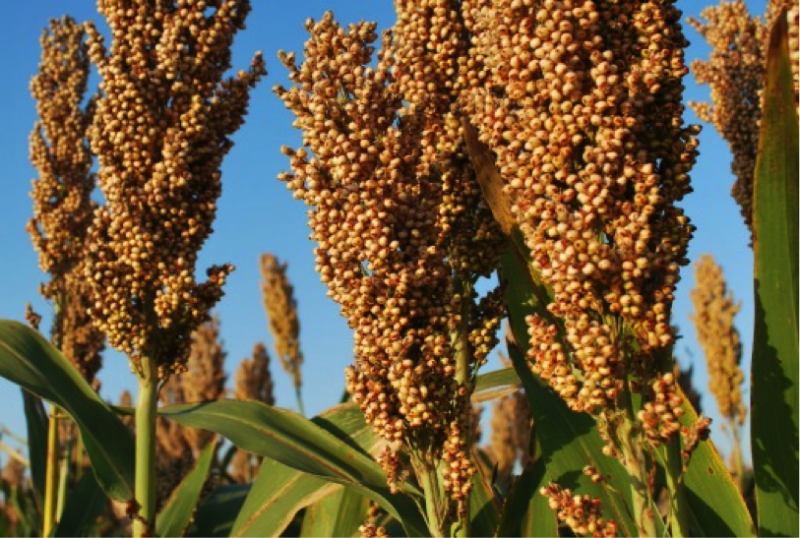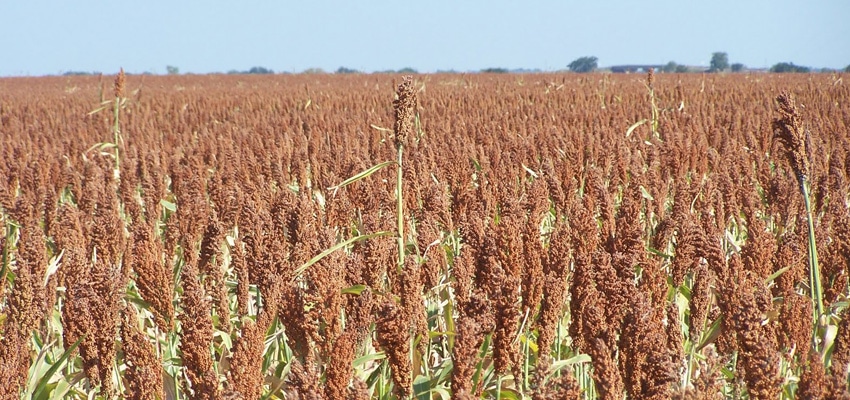
The combine cuts the seed head off and threshes, or removes, the seed from the head. Farmers use combines to harvest their grain sorghum.When the grain sorghum plant reaches maturity and is ready for harvest, it is approximately four feet high, the leaves have turned to a light brown, and the seeds have hardened.Other varieties may be white, yellow, or bronze. The new leaves are a brilliant green and the seeds darken to a color depending on variety, usually red in Texas.The production of the head that holds the round seeds begins to develop at the top of the plant. Next, the plant begins to produce leaves and the stem begins to grow.This is because the plant is establishing a root system and taking up nutrients rapidly. Growth is not very rapid until the plant is about 10 inches tall.Grain Sorghum seeds are planted in rows during the spring, March to April, when soil temperatures exceed 65 degrees F.Today, sorghums have two or three dwarfing genes in them and are 2 to 4 feet tall.Before the 1940s, most grain sorghums were 5 to 7 feet tall, which created harvesting problems.


Benjamin Franklin is credited with introducing the first crop to the United States in the 1700s.



 0 kommentar(er)
0 kommentar(er)
